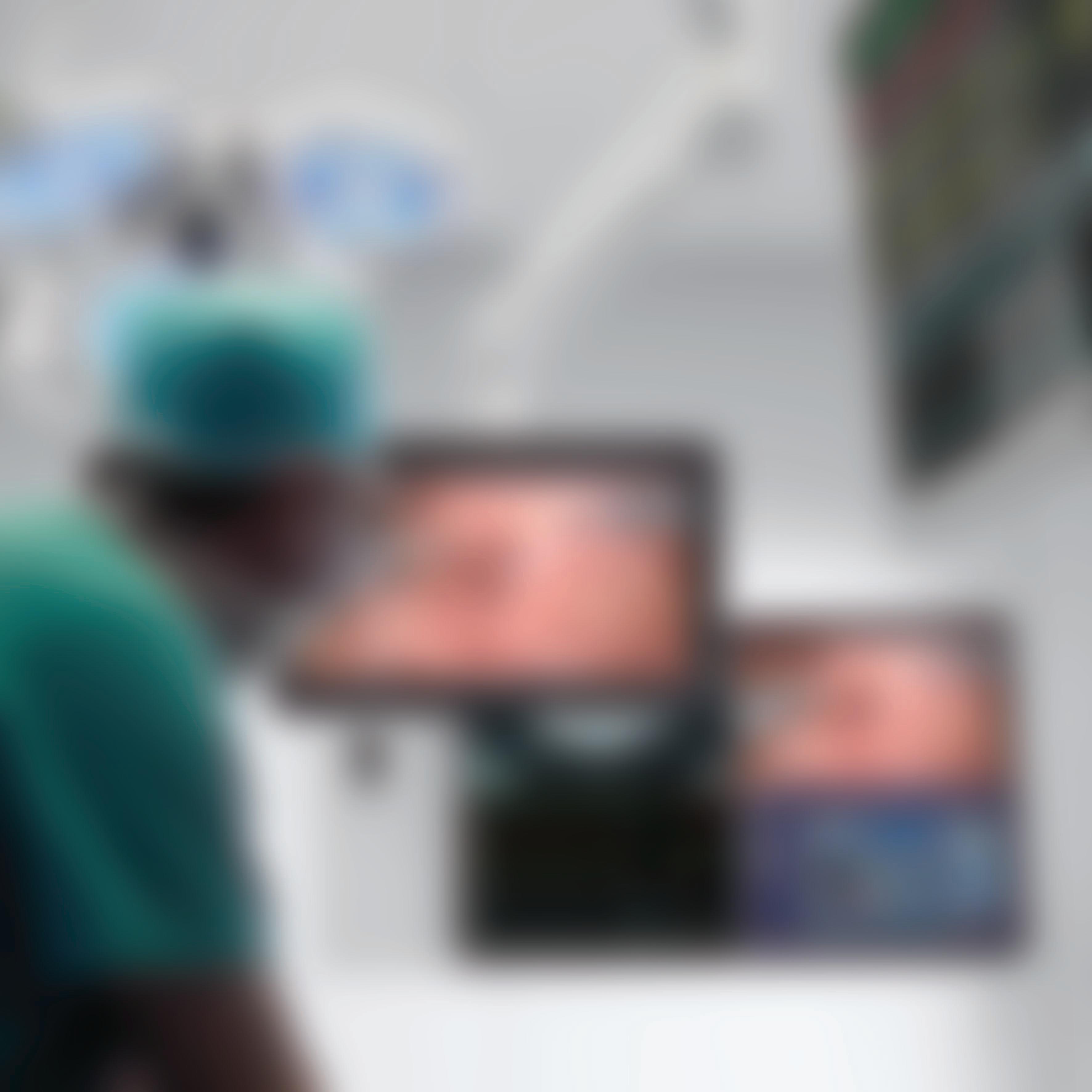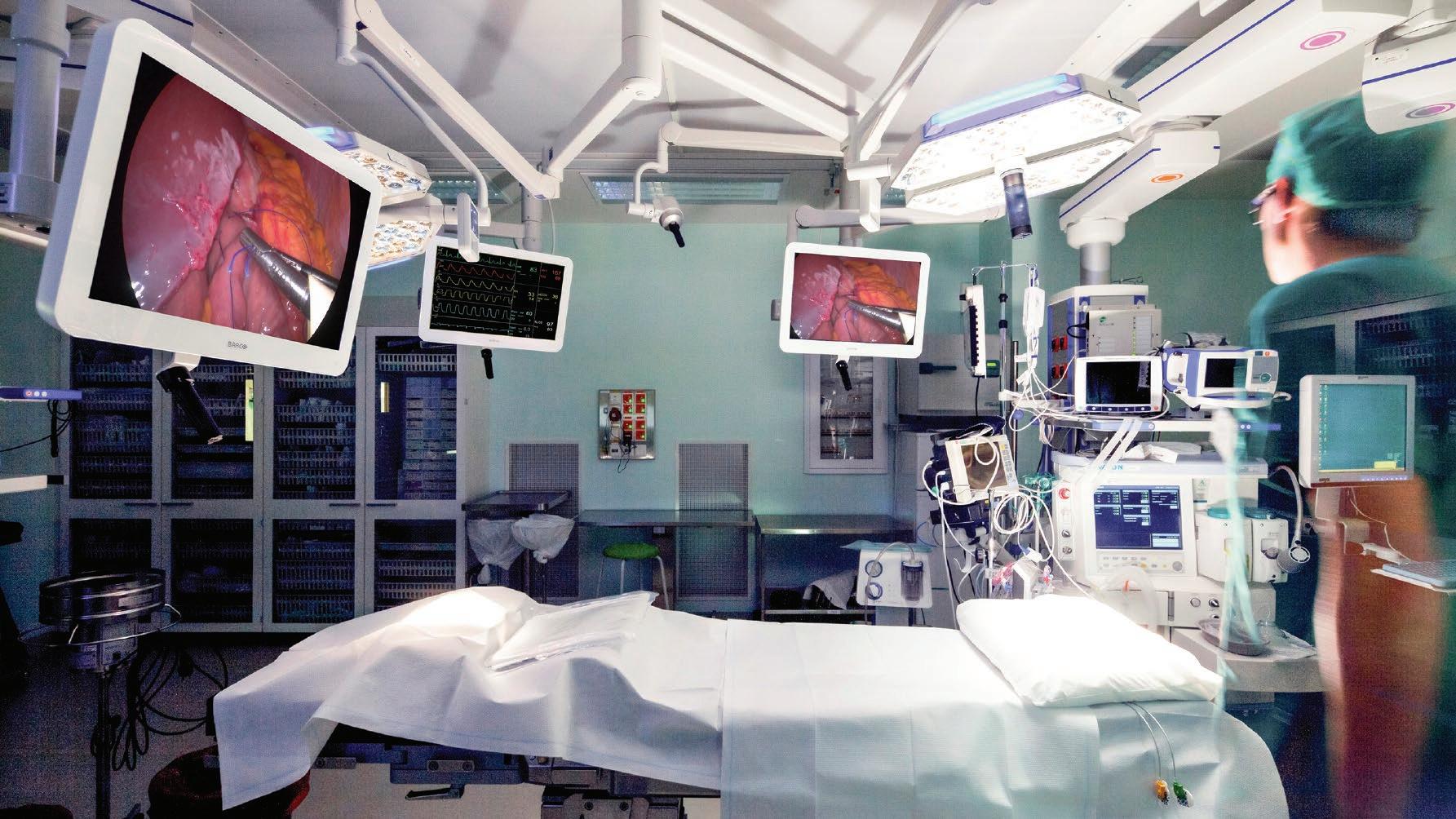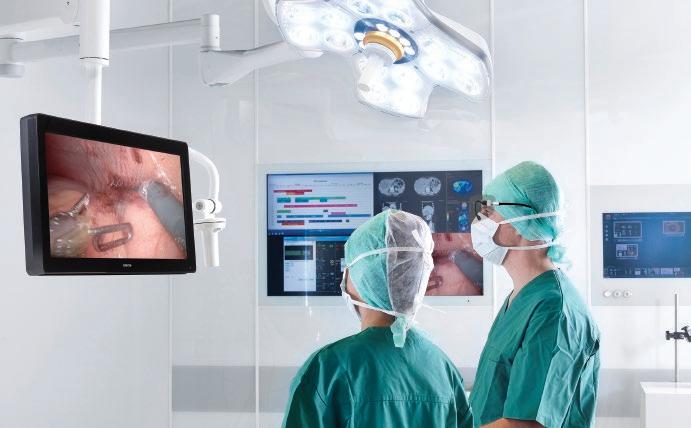
5 minute read
A Better View for the Surgeon
from Hospital Reports – Improving Operating Room Efficiency and the Role of Digital Technology – Barco
John Hancock, Editor
The digital world reaches into the operating theatre and offers a range of possibilities for improvement
Go to any exhibition or trades related conference these days and it won’t be long before an exhibitor or a speaker utters the word ‘digital’. Digital capabilities are at the heart of Industry 4.0 whose reach considerably exceeds the manufacturing range of previous industrial revolutions. This digital revolution is being applied in every area of human activity and that includes healthcare plus, in particular for the subject of this paper, the operating theatre or room.
What Is Digital Technology?
So, what is the big deal with digital technology: how does it differ from its predecessor, analogue? Funnily, analogue technology is the harder one to explain but, understanding it helps clarify why digital is so much better. As this isn’t a technology paper, we’ll just state as Explain That Stuff1 does, that analogue is a direct representation or analogy of a dimension (say, length), an image (film-based photography) or a process (say time marked by the progress of hands on a clock). “Digital is entirely different. Instead of storing words, pictures, and sounds as representations on things like plastic film or magnetic tape, we first convert the information into numbers (digits) and display or store the numbers instead.” That means that, whenever the information, in whatever format, is stored and called up, it is recreated from the stored numbers and, therefore, the quality is retained. But the capabilities are a lot more than just accurate reproduction.
The Nuffield Trust2 has considered why it has been difficult to deploy digital technology in healthcare. Read the reference for a full explanation but the key statement seems to be that, “Transformation comes from new ways of working, not the technology itself – what is needed is a transformation programme supported by new [i.e. digital] technology, not the other way round.” In other words, a digital solution will not remedy a bad process but will ensure that a good process works to the full extent of its potential. The onus is to create good processes that can fully benefit from digital technology.
The Advantages of Digital Technology
There are many advantages, other than retained quality, that digital brings to the job. Again, rather than spell them all out, not our purpose in this paper, I’ll direct readers to Ten Benefits whose ’10 benefits of Digital technology’3 include compactness, connectivity, speed of process, versatility… up to ten advantages, all of which will be applicable in healthcare and most of which will benefit work processes in the operating theatre. Digital Health Buzz’s ‘Benefits of Digitization in the Healthcare Industry’4 gets more specific, focusing on the automation of administrative tasks and, “Communication between Multiple Physicians”, an application of digital capability that is relevant to surgical procedures.
Focusing clearly on the operating theatre, Annals of Translational Medicine5 reports, “The continuing enhancement of the surgical environment in the digital age has led to a number of innovations being highlighted as potential disruptive technologies in the surgical workplace. Augmented reality (AR) and virtual reality (VR) are rapidly becoming increasingly available, accessible and, importantly, affordable... applications are already being investigated for their role in the surgeon’s armamentarium.”
However, notwithstanding the advantages of digital technology, as the Nuffield Trust report above explains, “… there is agreement that health care is at least a decade behind other industries in the use of information technology. It may be even further behind in realising the productivity and value improvements that have been seen elsewhere as the result of information
technology.” Further on, the report considers opportunities to drive improvements from the leveraging of technology, including, “Improved access to specialist expertise – I, and those that support me, can access the specialist advice I need, wherever and whenever I need it.”
Digital Technology in Surgery
The Cleveland Clinic6 highlights the possibilities from introducing digital imaging technology into surgical practice. “For years, surgeons have… [depended] on their own eyes and interpretations to execute the most precise of tasks. In these cases, his or her head is down, thereby limiting peripheral vision and communication with staff, while straining his or her back and neck muscles for hours at a time… This past year, two of the most intricate surgical practices, ophthalmology and neurology, have been experimenting with new technology that not only keeps surgeons’ heads up, but also immerses the surgeon into a high resolution, 3D visual representation of their subject.”
It does seem that the health sector is waking up, and at an accelerating rate, to the possibilities of using digital technology. MD+DI Online7 predicts, “Hospitals are replacing antiquated surgical spaces with new operating suites to better support outpatient surgery, minimally invasive techniques, and digital and technological innovations. Robotic surgical systems and imaging technologies like surgical navigation systems are projected to become ubiquitous.”
Among the many advantages to be gained from employing digital imaging in the operating theatre is that of maximum access and visibility of the operation site with minimum need to open-up the patient. Keyhole surgery is an established part of surgical practice but often surgeons are working with lower visibility of an, often constricted, area. Imaging of any sort will help and the instruments used in keyhole procedures have long had some sort of camera attached in order to assist the surgeon. With digital imaging, it is possible to go one stage further and to generate a 3D image on a larger than life screen. This will greatly assist with not only accuracy of the procedure but also with the quality of the job. In 2014, John Nosta, writing in Forbes8 explained, “Today, 3D is being used in laparoscopic surgery, a technique in which an operation in the abdomen or pelvis is performed through small incisions with the aid of a camera, as close in clarity and depth perception as surgical teams can get without opening the patient. Compared to open surgery, laparoscopic approaches offer reduced pain and haemorrhaging, as well as shorter recovery times and better cosmetic results.”
Digital technology is definitely here to stay and its companion, digital imaging, is similarly fast becoming an indispensable support in the operating theatre.






